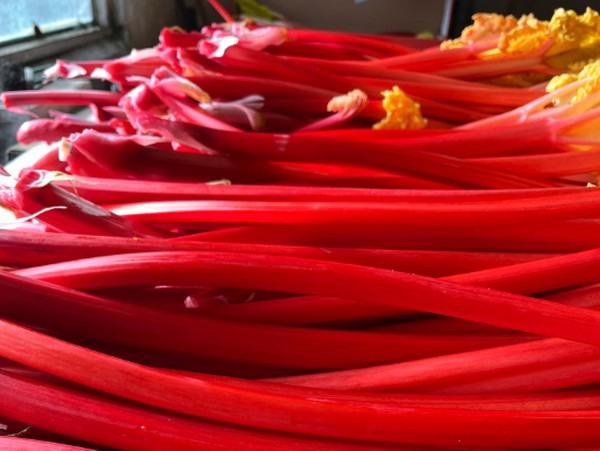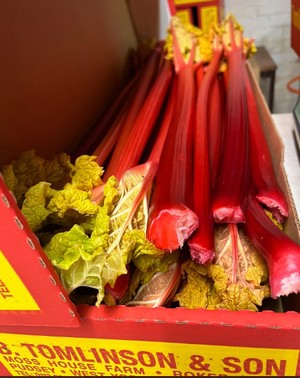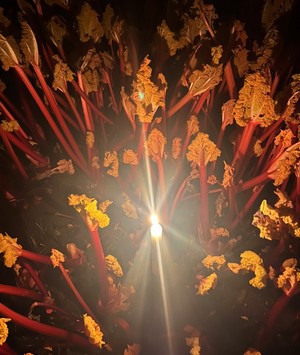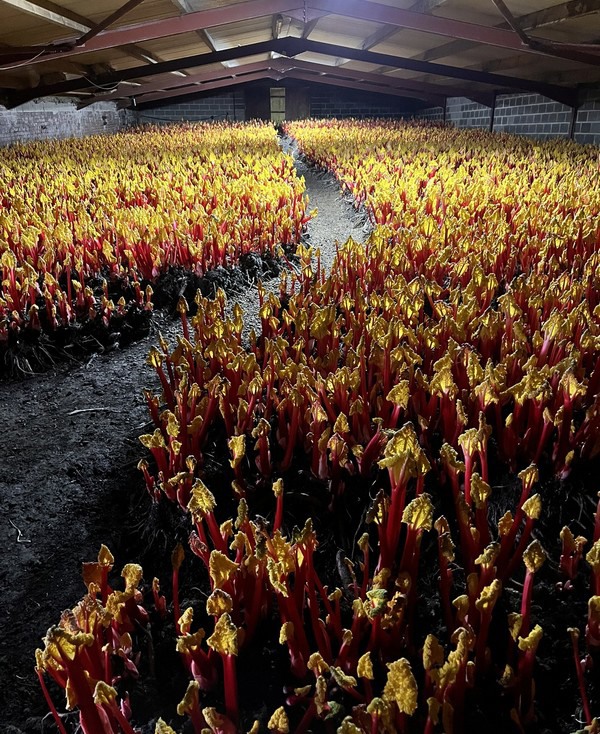It is rhubarb harvesting time in West Yorkshire. This 23km2 is known as the Rhubarb Triangle and is famous for its early forced rhubarb crop.
One grower in the famous Rhubarb Triangle is Robert Tomlinson who has four sheds, producing 30-40 tonnes a year. The roots are grown outside in open ground for two years before being moved inside after they have had bit of cold weather in December.

“After about 4-5 weeks the rhubarb is ready to harvest, we keep going for 6-8 weeks working between 12-15 hours a day,” explains Robert. “Everything is harvested by hand, it would be impossible for a machine to select which stalks are ripe or not. This is how we have been doing it for decades. The only part of the process which is mechanised is when the roots are lifted from the fields.”
 The ideal temperature for growing rhubarb is 10-12 C meaning the sheds have to be heated through the winter when the temperatures drop.
The ideal temperature for growing rhubarb is 10-12 C meaning the sheds have to be heated through the winter when the temperatures drop.
“With the cost of energy just now, heating the sheds was expensive in late December - early January when temperatures were very low, but after that is was very mild which gave us a different problem: it was too mild and the rhubarb grew too quickly! There is nothing we can do about this, just pick faster.”
The rhubarb is harvested by candlelight, this may sound romantic but Robert assures that it is not, especially when you are doing it for 15 hours a day! It is done to prevent photosynthesis as this causes the sugars to go to the leaves of the plant and away from the stalks.
 90% of Robert’s production goes to the catering trade, rhubarb is in demand from top chefs who incorporate it into each course of the menu. Rhubarb is very versatile and can be served with oysters, mackerel and duck, not just in the humble crumble.
90% of Robert’s production goes to the catering trade, rhubarb is in demand from top chefs who incorporate it into each course of the menu. Rhubarb is very versatile and can be served with oysters, mackerel and duck, not just in the humble crumble.
Although popular now, demand for rhubarb has had it ups and downs, in the 70’s and 80’s demand was very low and it was going for 25p a box, which was below production cost. In the late 90’s into 2000 it saw a revival, but by then many growers had stopped. At one time there were 200 growers covering 78 km2 now there are just 10 over 23km2.

“It is a very volatile market and prices go very much on supply and demand - when the weather is warmer we all have a lot of product and when it colder we all have less.”
For more information:
Robert Tomlinson
B Tomlinson & Sons
Tel: +44 7855 374036
[email protected]










